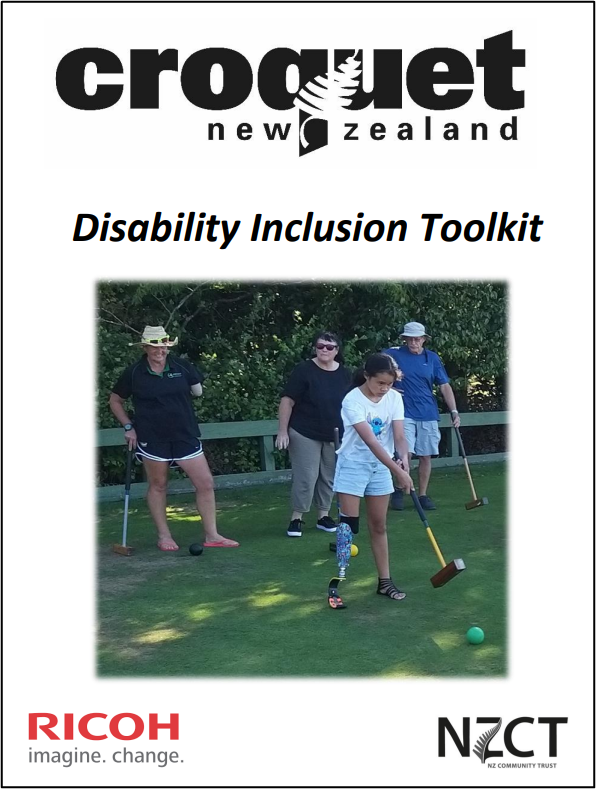Croquet New Zealand is committed to enabling quality experiences through the sport of croquet and making this a sport for everyone in the community. This means providing a safe and accessible environment for all New Zealanders to try croquet.
CNZ’s Inclusion Journey

In August 2021, CNZ embarked on its Inclusion Project. This initiative was established to help demonstrate CNZ’s vision – Croquet: a sport for everyone. In December 2021, the new role of Inclusion Officer was filled, with the task of fostering relationships between clubs, associations and organisations that support athletes with disabilities to ensure that there are long-term opportunities for them to play croquet.
The initial focus of the project has been supporting tamariki and rangatahi with disabilities through the help of the Parafed network, Halberg Foundation and Special Olympics. Programmes have taken place in twelve regions around the country. So far, we’ve had a range of participants, including wheelchair-users, amputees and players with special needs. These are the numbers of our project so far:
The Project by Numbers

We look forward to leading more programmes across the country and making croquet a fully inclusive sport.
Join our Community
Croquet is an accessible sport which caters for different body types, abilities and levels. If you have a disability and would like to play, find out more by contacting CNZ, or Find a Club near you and reach out for a game.
You can access our Find a Club function here.
Key Steps for Clubs
Supporting individuals with different needs is a necessity for all clubs. The following steps can help to achieve this:
- Make every croquet experience a positive one,
- Remember that individuals are experts on their abilities,
- Allow adaptation and modification as much as possible to suit the individual,
- Offer assistance to those who require it, but wait for their permission,
- Address the individual rather than the caregiver.
Resources
CNZ Disability Inclusion Toolkit
Croquet New Zealand’s Disability Inclusion Toolkit contains advice about how best to welcome players with disabilities to your club and ideas on equipment and other facilities. This Toolkit will continue to be adapted as more programmes take place and new challenges are encountered. To access the Toolkit, click on the cover below:
Case Studies
Our first inclusion programmes have provided us with great knowledge about how best to deliver a memorable and enjoyable experience for players with disabilities. These Case Studies explain the planning process, implementation and findings of our projects.
Terminology
Correct disability language can be unclear, leading to incorrect use and inadvertently offending others. Below is a reference guide to assist when writing or talking with and about people with disabilities at your club or in everyday life. This is not a definitive list, and it is always best to check with the individual about the language they prefer.
| CNZ’s preferred terms | Instead of | Description |
|---|---|---|
| -Player | -Any other specification | All croquet players are people and players first. A distinction does not always need to be made. |
| -Player with a disability -Disabled player | -Handicapped player -Deformed -Crippled | However. if you do feel the need to specify, you may use these preferred terms. “Impairment” or “impaired” are acceptable within the community but CNZ uses “disability” or “disabled” in its communications. An individual’s preference is always the most important. Individuals should not be addressed by these three listed terms in any form. |
| -Able-bodied | -Normal -Healthy | As above, a distinction does not always need to be made. Everyone with a disability is normal and healthy too. |
| -Wheelchair-user | -Wheelchair-bound -Paraplegic | A wheelchair provides mobility and not restriction. A person should not be defined by their medical condition. |
| -Non-verbal | -Mute -Dumb | When someone is unable to speak or communicate, these outdated terms should be avoided. |
| -Little person -Short-statured | -Dwarf -Midget | Dwarfism is the medical term used to describe the condition, but the person is not a dwarf. |
For a more extensive list, please see the Halberg Language Reference Guide.
Aktive Understanding Disability Toolkit
This toolkit has information to help with understanding, encouraging and empowering disabled athletes.



